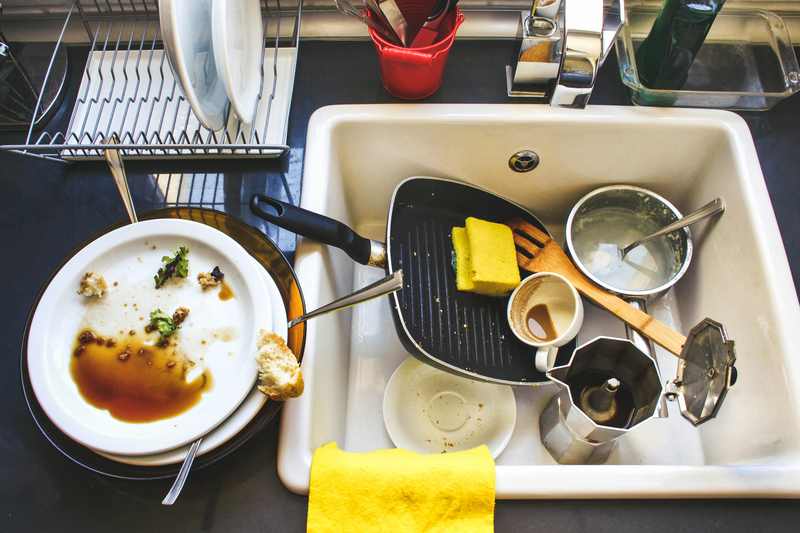Long-Term Sofa Storage: Maintenance Tips from the Experts
Whether you're moving, downsizing, or simply making space at home, knowing how to keep your sofa in peak condition during long-term storage is crucial. Sofas are often significant investments, not only in terms of money but also comfort, style, and sentimentality. Poor storage practices can result in sagging cushions, permanently creased fabric, unpleasant odors, and even mold. That's why professional sofa storage advice is essential for safeguarding your furniture's longevity and value.
Why Proper Long-Term Sofa Storage Matters
Storing furniture, especially large pieces like sofas, is not as straightforward as simply placing them in a room or garage. Without correct preparation and environment control, couches can suffer significant structural and aesthetic harm. Here are some potential risks of improper long-term storage:
Mold and mildew growth from excess moisture- Fabric and leather deterioration due to temperature fluctuations
- Insect infestations
- Frame warping or bending caused by improper stacking or placement
- Permanent odor absorption from musty environments
- Discoloration from sunlight exposure
To avoid these issues, meticulous planning and maintenance are required. Let's dive into expert-backed sofa storage and maintenance strategies.

Expert Tips for Preparing Your Sofa for Storage
1. Clean Thoroughly Before Storage
Any dirt, spills, or crumbs left behind can worsen during months in storage, attracting pests and producing stubborn stains. Here's how to clean your sofa before long-term storage:
- Vacuum all surfaces: Use a brush attachment to eliminate dust, pet hair, and debris from both the surface and crevices.
- Spot clean stains: Use a gentle cleaner appropriate for your sofa's material (fabric, leather, or faux) and allow the area to dry thoroughly.
- Professional deep clean: If feasible, hire a professional upholstery cleaner, especially for delicate or expensive sofas.
- Remove odors: Sprinkle baking soda over cushions, let sit for a few hours, and vacuum thoroughly before storage.
2. Disassemble When Possible
Breaking your sofa down into smaller components makes moving and storage easier. It also reduces the risk of damage.
- Remove legs and cushions: Store these pieces separately in labeled plastic bags or bins.
- Detach arms or backs: If your sofa is modular, disassemble according to the manufacturer's instructions.
Label all hardware and store together for easy reassembly after the storage period.
3. Protect Your Sofa with Wrapping
Physical protection is a crucial part of long-term couch storage. The right wrapping method shields against dust, pests, and mechanical damage.
- Use breathable covers: Avoid plastic wrap on fabric sofas for long-term storage. Instead, use cotton sheets or specialized breathable furniture covers to prevent condensation build-up and mold.
- For leather sofas: Consider wrapping with moving blankets, then a loose plastic covering for short-term moisture protection, ensuring no airtight seal forms.
- Wrap legs and corners: Use bubble wrap for protruding or delicate wooden or metal parts to prevent chipping.
Choosing the Ideal Storage Space
Your choice of storage facility or environment can make or break your sofa's long-term health.
1. Opt for Climate-Controlled Storage
- Consistent temperature: Sudden heat or freeze cycles can warp frames and crack upholstery.
- Humidity regulation: Excessive moisture causes mildew, while dry air damages leather and wood.
If a climate-controlled self-storage unit isn't possible, keep the sofa inside your home or in a finished basement or attic, where temperature and humidity are more stable.
2. Elevate Off the Ground
- Avoid direct contact with floors: Especially in garages or commercial units, floors can become damp, increasing the risk of mold, rot, and pest infestation.
- Use pallets or boards: Raise the sofa at least 3-6 inches above the ground for optimal air circulation.
3. Avoid Stacking Heavy Items
- No stacking: Placing boxes or other furniture on your sofa can crush frame components or leave permanent cushion imprints.
4. Ensure Proper Air Circulation
- Leave space: Don't push your sofa flush against walls; maintain a few inches for airflow to inhibit condensation and mildew.
Maintaining Your Sofa During Storage
Storing your sofa for several months--or potentially years--requires periodic maintenance checks to ensure it remains in pristine condition.
1. Regular Inspections
- Check for pest activity: Look for droppings, nests, or chewed areas. Early detection prevents major damage.
- Monitor moisture: Inspect for mold, mildew, or musty odors, especially after rainy spells or humid weather.
- Assess wrap integrity: Make sure covers remain dry, intact, and clear of tears.
2. Rotate and Fluff Cushions
- Avoid flat spots: If safely accessible, rotate or reposition couch cushions every 2-3 months to prevent compression and maintain their shape.
3. Maintain Air Quality
- Dehumidifiers: In damp environments, a dehumidifier inside the storage space helps prevent mold and keeps air fresh.
- Odor absorbers: Place open boxes of baking soda, activated charcoal, or specialty odor-absorbing bags nearby.
Special Considerations for Upholstery Types
Not all sofas are made equal; materials like leather, microfiber, linen, and suede each have unique storage needs.
Leather Sofas
- Condition before storage: Apply a high-quality leather conditioner to keep it supple and reduce the risk of cracking.
- Avoid plastic wrap: Leather needs to breathe. Use cloth coverings and avoid prolonged airtight wrapping.
- Temperature control: More sensitive to heat and cold than other materials, leather should always be in a climate-stable space.
Fabric and Microfiber Sofas
- Dry thoroughly: Never store damp. Even minimal moisture can foster mildew and odors.
- Double-layer protection: If worried about potential exposure to dust and insects, use a fitted cotton sheet covered by a loose plastic tarp (not airtight) as a second layer.
Wood Trim or Accents
- Polish wood: Treat exposed or decorative wood edges with furniture polish to protect against drying or cracking.
- Extra wrapping: Pay special attention to these areas when wrapping to avoid scratches or dents.
Reinstalling Your Sofa After Long-Term Storage
When it's time to retrieve your sofa after months--and maybe years--of storage, a careful process is key to restoring it to prime condition.
Unwrap and Air Out
- Do it outdoors if possible: Take the sofa outside to shake off dust and air barriers before bringing it indoors.
- Check for odors or mildew: Place the sofa near open windows to allow lingering smells to dissipate.
Reassemble Carefully
- Reference your inventory: Having labeled hardware and instructions makes the reassembly process smooth and accurate.
- Tighten all joints: Secure all bolts, screws, and connectors for wobble-free seating.
Final Cleaning Touches
- Vacuum and wipe down: Give the sofa a final once-over to remove storage-related dust.
- Refresh fabric or leather: Consider another round of fabric cleaning or apply a fresh coat of leather conditioner.
Additional Pro Tips for Long-Term Couch Storage
- Keep a list: Take inventory and photographs of your sofa (and its condition) before storage for insurance or reference during retrieval.
- Don't over-tighten covers: Especially with shrink-wrap, as too much tightness can deform upholstery over time.
- Consider pest repellant options: Mothballs, cedar blocks, or natural repellants can be placed nearby, just ensure they don't touch the sofa directly.
- Document placement: Ensure you can reach your sofa without moving too many items--this encourages periodic checks and reduces the risk of accidental damage.

Frequently Asked Questions about Sofa Storage
Can I Store My Couch in a Garage or Shed?
It's not recommended for long-term storage. These areas are often exposed to temperature fluctuations, humidity, and pests, which may lead to severe sofa damage. If you must use a garage, prioritize moisture barriers, regular checks, and keep the sofa raised from the floor.
What's the Ideal Duration for Sofa Storage?
No time limit if stored correctly. With proper preparation and maintenance, your sofa can be stored safely for years. However, periodic inspections are crucial for identifying and addressing potential problems early.
How Do I Prevent Mold and Mildew During Storage?
Use dehumidifiers, ensure the sofa is completely dry before storage, choose climate-controlled units, and allow air to circulate. Proper covering with breathable materials also prevents moisture build-up.
Conclusion: Safeguard Your Sofa for the Long Haul
Reliable long-term sofa storage is about more than stacking furniture; it's a thoughtful process that preserves your couch's structure, aesthetics, and comfort. By cleaning thoroughly, using appropriate covers, opting for climate-controlled environments, and following maintenance schedules, your sofa will emerge from storage just as comfortable and attractive as the day it was packed away.
Trust these expert sofa storage and maintenance tips, and rest assured that your couch will be ready for many more years of leisure, family time, and cherished memories!



